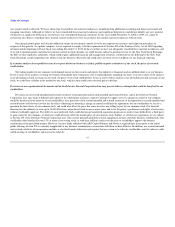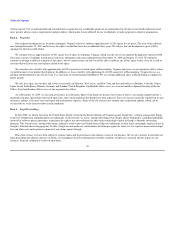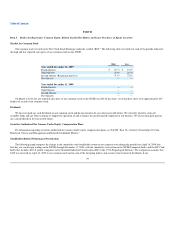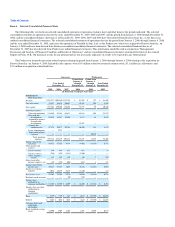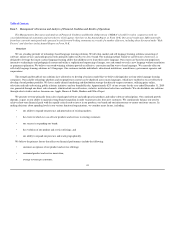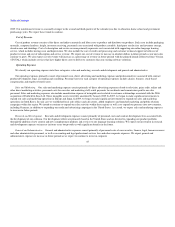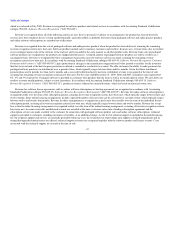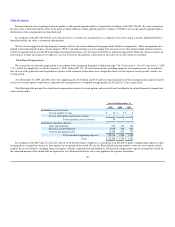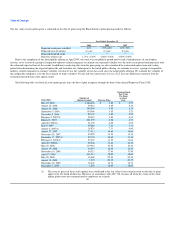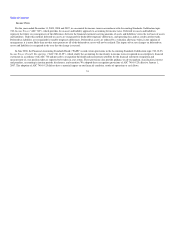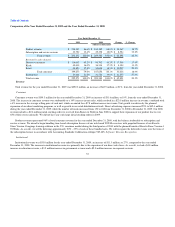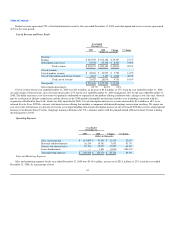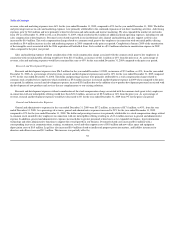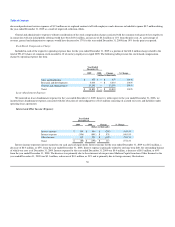Rosetta Stone 2009 Annual Report Download - page 49
Download and view the complete annual report
Please find page 49 of the 2009 Rosetta Stone annual report below. You can navigate through the pages in the report by either clicking on the pages listed below, or by using the keyword search tool below to find specific information within the annual report.
Table of Contents
infrastructure and incur additional expenses associated with being a public company, including increased legal and accounting costs, investor relations costs,
independent director compensation, exchange listing fees and stockholder related fees, higher insurance premiums and compliance costs in connection with
Section 404 of the Sarbanes-Oxley Act of 2002. We also intend to increase administrative expenses as a result of our planned international expansion.
Stock Compensation Charge. Included in the respective operating expense lines is an aggregate $18.8 million expense, consisting of $18.5 million in
stock-based compensation expense and $0.3 million in payroll tax expense, related to common stock grants awarded to key employees equal to a total of
591,491 shares in April 2009. This grant was net of the number of shares required to be withheld to satisfy the federal, state and local tax withholding
obligations. The aggregate grant date fair value of the awards was $18.5 million, which we recognized as stock-based compensation expense on the grant date,
as the awards were immediately vested. We allocated this $18.8 million aggregate expense among the operating expense line items in accordance with the
functions performed by the respective employees who received the grants.
Other Income (Expense)
Other income (expense) primarily consists of interest income and interest expense. Interest expense is related to our long-term debt, the outstanding
balance of which was zero as of December 31, 2009. Interest income represents interest received on our cash and cash equivalents.
Income Tax Expense
Income tax expense consists of federal and state income taxes in the United States. For the year ended December 31, 2009, our worldwide effective tax
rate was approximately 35%-38%. We expect our worldwide rate to be approximately 35% in 2010 and beyond assuming no general increase in U.S. federal
or state income tax rates applicable to companies such as ours. However, we expect our income tax expense to increase in absolute dollars as our income
continues to grow.
Critical Accounting Policies and Estimates
In presenting our financial statements in conformity with accounting principles generally accepted in the United States, or GAAP, we are required to
make estimates and assumptions that affect the reported amounts of assets, liabilities, revenues, costs and expenses and related disclosures.
Some of the estimates and assumptions we are required to make relate to matters that are inherently uncertain as they pertain to future events. We base
these estimates and assumptions on historical experience or on various other factors that we believe to be reasonable and appropriate under the circumstances.
On an ongoing basis, we reconsider and evaluate our estimates and assumptions. Our future estimates may change if the underlying assumptions change.
Actual results may differ significantly from these estimates.
We believe that the critical accounting policies listed below involve our more significant judgments, assumptions and estimates and, therefore, could
have the greatest potential impact on our consolidated financial statements. In addition, we believe that a discussion of these policies is necessary to
understand and evaluate the consolidated financial statements contained in this annual report on Form 10-K.
Revenue Recognition
Revenue is primarily derived from the sale of packaged software and audio practice products, online software subscriptions and professional services.
Our professional services include training, implementation services and dedicated conversational coaching associated with Rosetta Stone TOTALe,
46


